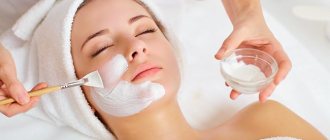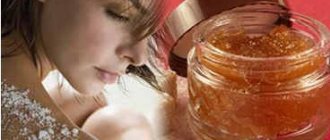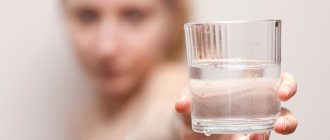Dryness in winter
The problem that occurs during the cold season is caused primarily by temperature changes (between indoors and outdoors) and dry air due to strong heating. Of course, the cold itself plays a big role, which leads to dehydration. And if you apply water-based cosmetics to your face and body, this will have a detrimental effect on your health and appearance. Most often, these are the reasons for very dry skin throughout the body in a particular season.
It is a mistake to think that you don’t need to use moisturizers in winter. With the right selection, the cream will work to improve your overall condition. Products containing shea, jojoba, and macadamia oils are recommended, as well as creams and ointments that form silicone occlusive coatings. But it is better not to use cosmetics with hyaluronic acid in cold weather.
Hygroscopic humecants
Hygroscopic humecants affect skin cells. These substances include: pyrrolidonecarboxylic acid, hyaluronic acid, collagen and lactic acid. The molecules of these substances are very similar to the skin. Hygroscopic humecants bind water molecules together and securely hold them in the layers of the skin. These are the most essential substances in the treatment of dry skin on the body. They also restore the level of moisturizing factor in the epidermis. The most powerful hygroscopic substance is hyaluronic acid, which is extracted from the skin of sharks and cockscombs. Just one gram of this substance can turn a liter of water into a gel. Therefore, cosmetics containing hyaluronic acid are very effective. Collagen also plays a big role in treating dry skin. This substance fills the intercellular space of the skin; it is capable of holding a huge amount of water, which exceeds its weight by 30 times.
Seasonal care features
- In summer (and not only!), sun protection is important for dry skin. Depending on your phototype, choose UV protection products.
- In autumn, it is important to prepare your skin for the cold: put all your efforts into restoring the barrier function!
- In winter, cold wind and frost have an extremely adverse effect on the skin. Try using denser and thicker textures with a rich nutritional formula and protective function. It is better to apply water-based skincare products some time before going outside so that they are well absorbed.
- In spring, you can switch to products with a lighter texture and moisturizers with UV filters.
How to choose the right cosmetics for dry skin?
Dry skin type needs intensive hydration for 24 hours. Special care for dry and dehydrated skin will help provide cells with the necessary amount of moisture and prevent its evaporation from the surface of the epidermis.
Ingredients: important ingredients
The following ingredients are most often included in skin moisturizing products:
- Hyaluronic acid
The most common moisturizing substance found in almost any cosmetic hydro product. Promotes the absorption and retention of large amounts of moisture in the cells of the epidermis, the synthesis of collagen and elastane, and the smoothing of wrinkles. - Glycerin
is a good moisture-retaining component that prevents dehydration of the dermis and accumulates moisture in its upper and lower layers. Has a pronounced softening effect. - Antioxidants
Neutralize the effects of free radicals, maintain a healthy complexion, reduce inflammation and actively fight cell aging. - Plant extracts
Vegetable oils effectively cope with dry dermis. The component has a softening and nourishing effect, reduces sensitivity, saturates the dermis with microelements, vitamins, fatty acids and amino acids. - Ceramides
Restore lipid film and prevent moisture evaporation. - Linoleic acid
Strengthens the lipid barrier and protects collagen fibers. - Phospholipids
Deliver active components (for example, linoleic and linolenic acids) to the deep layers of the epidermis. - Algae extracts
Strengthen the protective functions of the skin. - Thermal water
Moisturizes, nourishes, strengthens the epidermis, reduces sensitivity and has a powerful anti-inflammatory effect.
When choosing care for dry sensitive skin, remember the types of moisturizers:
- Avoid cleansing products based on alcohol, acids (even glycolic and fruit acids) and with a high alkaline content.
- Basic creams should contain rich nourishing and moisturizing complexes based on plant components and hydrofixatives that will retain moisture in the dermis throughout the day.
- Be sure to use intensive, nourishing night care with restorative and strengthening formulas.
- To create makeup, also use moisturizing decorative cosmetics. A tinted moisturizer with a particularly high content of caring agents Toleriane Sensitive le Teint intensively moisturizes, soothes, and enhances the protective function of very sensitive skin. Can be used as a basic daytime moisturizer or foundation.
- Use masks to expressly restore and moisturize the epidermis. The formula of such masks penetrates into the deep layers of the dermis, softening, soothing and nourishing the tissue. Hydraphase Intense is an intensely moisturizing, soothing mask for dehydrated facial skin with a light gel-cream texture that intensely moisturizes, restores comfort and elasticity to the skin, softening and smoothing it.
Degrees of development
The disease can have different levels of severity. The moderate stage gives a feeling of tightness, the epidermis becomes rougher, irritated, and elasticity decreases. Very high severity leads to peeling of scales, areas of severe irritation, pimples, and itching appear on the face and body. Some areas, such as knees and elbows, tend to be particularly dry - these areas are particularly rough and may develop rough calluses.
The doctor will advise you on what exactly needs to be done - in some cases it is necessary to use not just care products, but medications. They should be prescribed exclusively by a specialist: even a pharmacist at a pharmacy does not always recommend suitable medications. An allergy that joins the irritation that torments you can lead to serious injury that will have to be treated longer and in more radical ways. The doctor will prescribe ointments that are suitable individually.
Caring for dry skin at home
Remember the iconic phrase that ignorance of the laws is no excuse? In the case of dry skin, it is 100% correct! Your task is to provide her with the right care, which will reduce dry skin and help get rid of the feeling of tightness.
Daily beauty routine
A day in the life of dry skin looks like this:
MORNING
- Delicate products are suitable for cleansing - for example, gel or foam with caring ingredients.
- Toning is an important step, skipping which can be considered a real beauty crime!
- It’s good if your daily moisturizer contains two types of components: actual moisturizers and moisture retainers.
- Don't forget about caring for the skin around your eyes. In this area, the skin is thinner and more delicate, so additional care and moisturizing is indispensable.
EVENING
- Let's return to where we started - to cleansing! Milk, micellar water or any other product designed for dry skin are suitable for removing makeup, and delicate cleansers are suitable for washing.
- Tonic will help remove remaining impurities and prepare the skin for the next stage of care.
- In addition to the restorative cream for night care, you can apply a complex of oils and serum.
EXTRA CARE
- For exfoliation, it is better to use delicate products with fruit acids. They will have a gentle exfoliating effect.
- Pamper your skin with masks two to three times a week. Very good fabric ones!
Skin type test
A professional cosmetologist in a clinical setting can easily determine what type of skin you have using a device called a dermatoscope. You can try to determine your type yourself. There are several ways to do this.
Method 1
Clean your face and do not apply makeup. After two hours, notice how your skin has changed:
- Normal. The shade does not change, there is no feeling of tightness or greasy shine.
- Dry. Tightness or flaking, which can be eliminated with a rich cream.
- Combined. The T-zone and cheeks are shiny.
- Fat. It acquires shine over the entire surface.
Method 2
As in the first case, you need to wash your face and wait 2 hours without applying any makeup. Next, a thin napkin is pressed tightly to the face. Your type is determined by traces of sebum:
- Fat. Imprint of sebum on all areas.
- Dry. There are no stains left on the paper. Skin particles may remain.
- Mixed. Marks in the T-zone, sometimes also on the forehead and/or chin.
- Normal. Minimal traces.
Both of these methods are as unreliable as they are simple. It is important to understand that you can make a mistake and harm yourself with the wrong care.
Other leather characteristics
In addition to this division into types, there are other categories of types of epidermis. Cosmetologists highlight the skin:
Problematic. This type most often occurs during puberty, from fourteen to twenty-five years. Characterized by various inflammations, acne, etc.
Mature. It is characterized by noticeable age-related changes, the presence of wrinkles around the eyes and on the forehead, the appearance of nasolabial folds, and drooping of the facial contours (also called ptosis).
Sensitive. Allergic skin, prone to irritation, itching, burning.
Cooperose. It is distinguished by visible capillaries located close to the surface.
Skin types
Structurally, different people's skin looks the same. The main difference is the intensity of the sebaceous glands. Let's look at each of the four main skin types in detail.
Normal skin
Main characteristics:
- smoothness and dullness of the cover;
- pores are narrowed;
- wrinkles appear after 35 years;
- the influence of the menstrual cycle on the condition of the skin is absent or minimal;
- no irritation, peeling, acne;
- pinkish tint.
The most problem-free type, which can be found extremely rarely - only 6% of the world's population can boast of this. Most often these are children under eleven years of age. Such people are not bothered by acne during adolescence. Age-related changes are slow.
Oily skin
Key Features:
- clogged, wide pores;
- oily, shiny surface (even after washing);
- there are comedones, inflammation, black spots on the nose (sometimes also on the forehead, chin);
- makeup fades a couple of hours after application;
- grayish color.
The good news for people with this skin type is that it fades more slowly, thanks to the increased activity of the sebaceous glands. After thirty, as a rule, the skin type becomes mixed.
Dry skin
Main differences:
- the cover is thin;
- pallor, dullness;
- there is peeling, a feeling of tightness;
- frequent allergies to cosmetics;
- makeup stays on well;
- In the morning, the skin is often irritated.
Age-related changes are noticeable after 25 years. The skin loses turgor, becomes less elastic, small wrinkles form around the eyes and mouth, as well as on the forehead. Any temperature changes affect the appearance of the skin - heat or cold can cause redness.
Combination skin
It is distinguished by:
- the face has dark shades;
- The T-zone is often shiny;
- enlarged pores in certain areas;
- in the area of the neck, cheeks, and temples the dermis is thinner;
- before the onset of menstruation, rashes are possible;
- uneven complexion.
Aging is unpredictable.
How to understand that your facial skin is dry: main signs
Of all skin types, dry skin is perhaps the most insidious. In youth, it causes so few problems that it seems there is no need for a beauty routine! However, insufficient or improper care can lead to increased dryness and the appearance of early wrinkles. What to do? First of all, collect “evidence” that will indicate that you really have dry facial skin.
Main signs of dry facial skin:
- No greasy shine.
- Unpleasant feeling of tightness after washing.
- Tendency to peeling.
- Early wrinkles.










